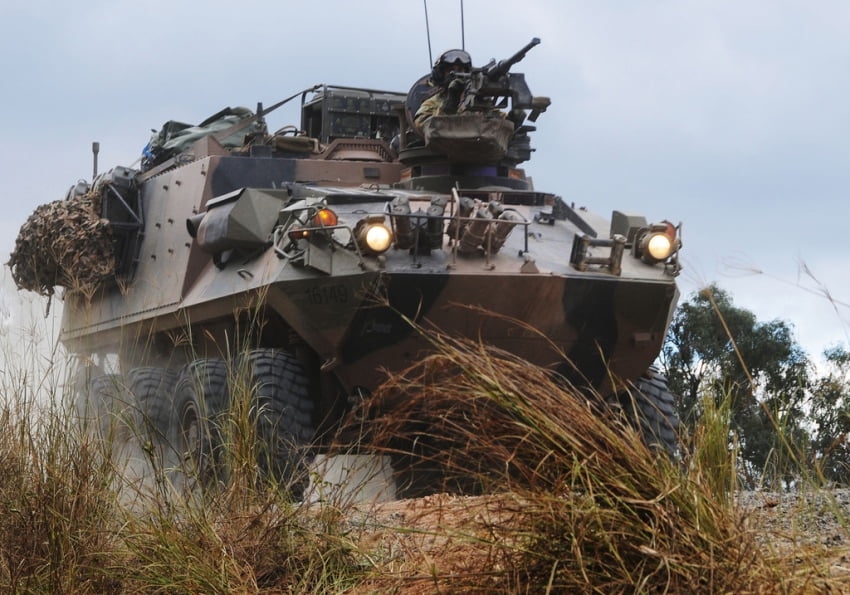The Australian government will ramp up Australia’s defence export with a $3.8 billion strategy in pursuit of seeing the country become a top 10 global defence exporter by 2028.
Prime Minister Malcolm Turnbull said the defence export strategy is all about job creation and enhancing the country’s defence capabilities.
“It will give Australian defence companies the support they need to grow, invest and deliver defence capability. It will make Australian defence exports among the best in the world,” he said.

Mr Turnbull said $20 million per year will be allocated to deliver the strategy. Of this, $4.1 million will used for grants to help build the capability of small and medium enterprises (SMEs) to compete internationally, while $3.2 million will be used to enhance and expand the Global Supply Chain program to help SMEs export their capabilities overseas.
Engineers Australia national manager of public affairs Jonathan Russell told InnovationAus.com the strategy will be an opportunity for Australian businesses to capitalise on the country’s defence needs and “make the domestic industry more stable and sustainable”. Part of this, he said, will be to engage with other defence companies, other than the top tier firms.
“If we want to have a bigger national defence industry and if we do want to get into the top 10 of exporters, then you can’t just rely on the top tiers,” he said.
“Also, the top tier companies, they rely on supply from further down supply chain in the same way the automotive industry did. Everyone knew about Holden and Ford but people were less aware of the parts of manufacturers further down the supply chain.
“A lot of those companies, for example, are trying to find ways to retool to serve a different market and one of those markets is going to be the defence industry.”
A Defence Export Office will be set up under the Department of Defence. The Office – together with Austrade and the Centre for Defence Industry Capability – will become the central point for delivering the strategy.
An Australian Defence Export Advocate will also be appointed to coordinate the efforts between government and industry, Mr Turnbull said.
Currently, Australia achieves between $1.5 billion to $2.5 billion per year in defence exports. The strategy has identified the United States, the United Kingdom, Canada, and New Zealand as priority markets for defence exports.
The $3.8 billion fund will be administered by Efic, Australia’s export credit agency, which will help Australian companies get the finance they need to underpin the sales of their equipment overseas.
Mr Turnbull said the decision to involve the Efic is because it will “provide confidence to Australian Defence industry to identify and pursue new export opportunities”.
Mr Russell predicted as Australia builds out its defence capabilities, it’s also likely going to attract more international talent and enhance local skills.
“Existing projects…already has highlighted the need for international experts to fulfill roles here and kick start our own workforce capability development. That’s not to say we don’t already have a lot of good capabilities in the country already,” he said.
“But if we’re going to be taking the next step in what we want to produce in Australia, we’re going to have to enhance that domestic capability, and the only way to do that quickly is to bring in overseas experts to help us make that jump.
“But of course, the intention should be to develop our Indigenous skills base so we become less reliant on overseas supply.”
However, Shadow Minister for Defence Richard Marles has criticised the government’s strategy as only a way of “window dressing” the loss of more than 2,000 Australian shipbuilding jobs and its failure to invest in Australian skills and jobs through major procurement decisions.
“The Government needs to do much more to invest in skilling our Defence workforce, including mandating skills transfer as part of any major Defence projects led by foreign primes, to ensure Australian defence industry is best placed to compete for projects internationally,” he said.
“This Government has presided over a massive deindustrialisation of Australia’s manufacturing industry, it will never be forgotten that the Australian car industry was goaded offshore by the Liberals.
“The Government is yet to explain its vision for how it will support and build an Australian defence industry. The window dressing in this announcement will mean little if the Government can’t even support local companies when it makes major procurement decisions.”
According to the strategy, Phase One, which will be implemented by the end of 2018, will focus on setting up the institutional arrangements to support defence exports. Phase Two, to be implemented by the end of 2019, will focus on implementing initiatives that will “raise the export potential” of Australian defence industry over the medium to long-term.
Do you know more? Contact James Riley via Email.

